Loop School By Paul Davids
$129.00 Original price was: $129.00.$38.00Current price is: $38.00.
Paul Davids Loop School Course [Instant Download]
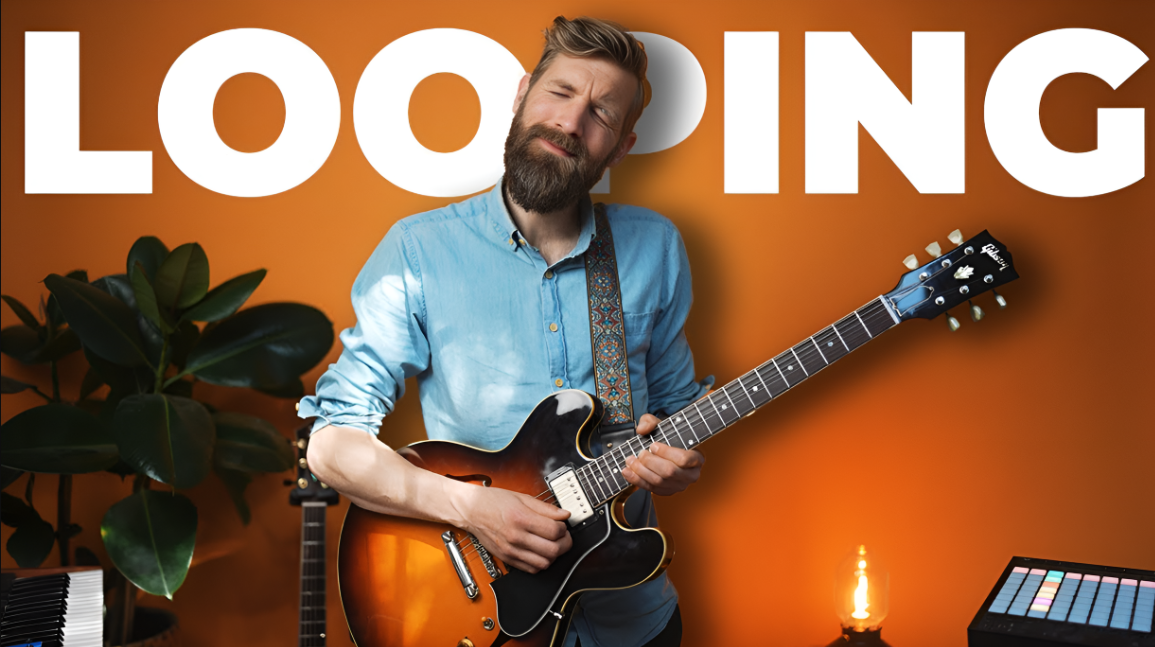
1️⃣. What is Paul Davids Loop School?
Paul Davids Loop School is a guitar course that teaches you how to use loop pedals to create music with multiple layers.
The step-by-step videos show you exactly how to record guitar parts that play over and over while you add new sounds on top.
You’ll learn how to keep perfect timing, balance different sounds, and build exciting musical pieces that make you sound like a full band by yourself.
📚 PROOF OF COURSE
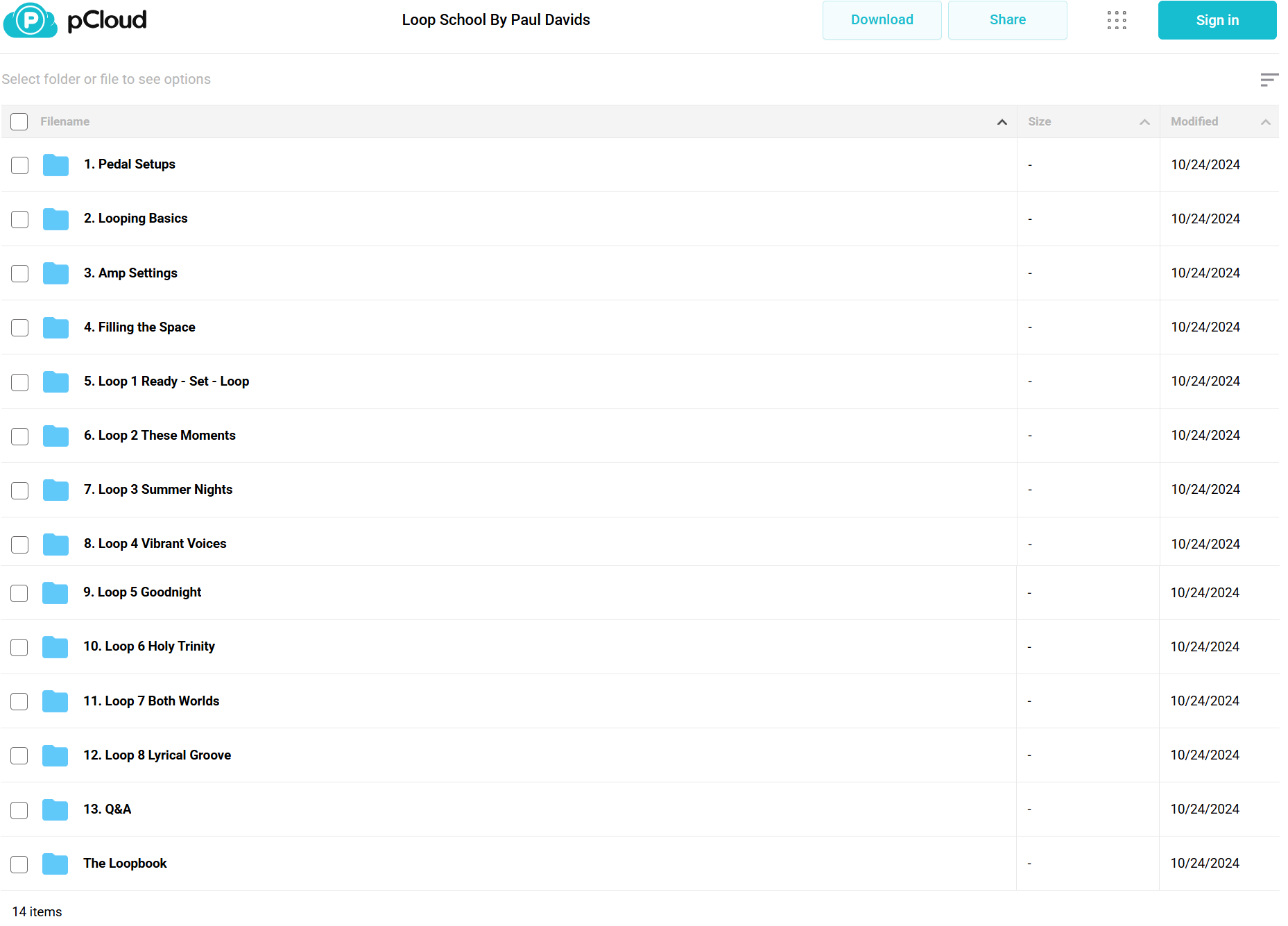
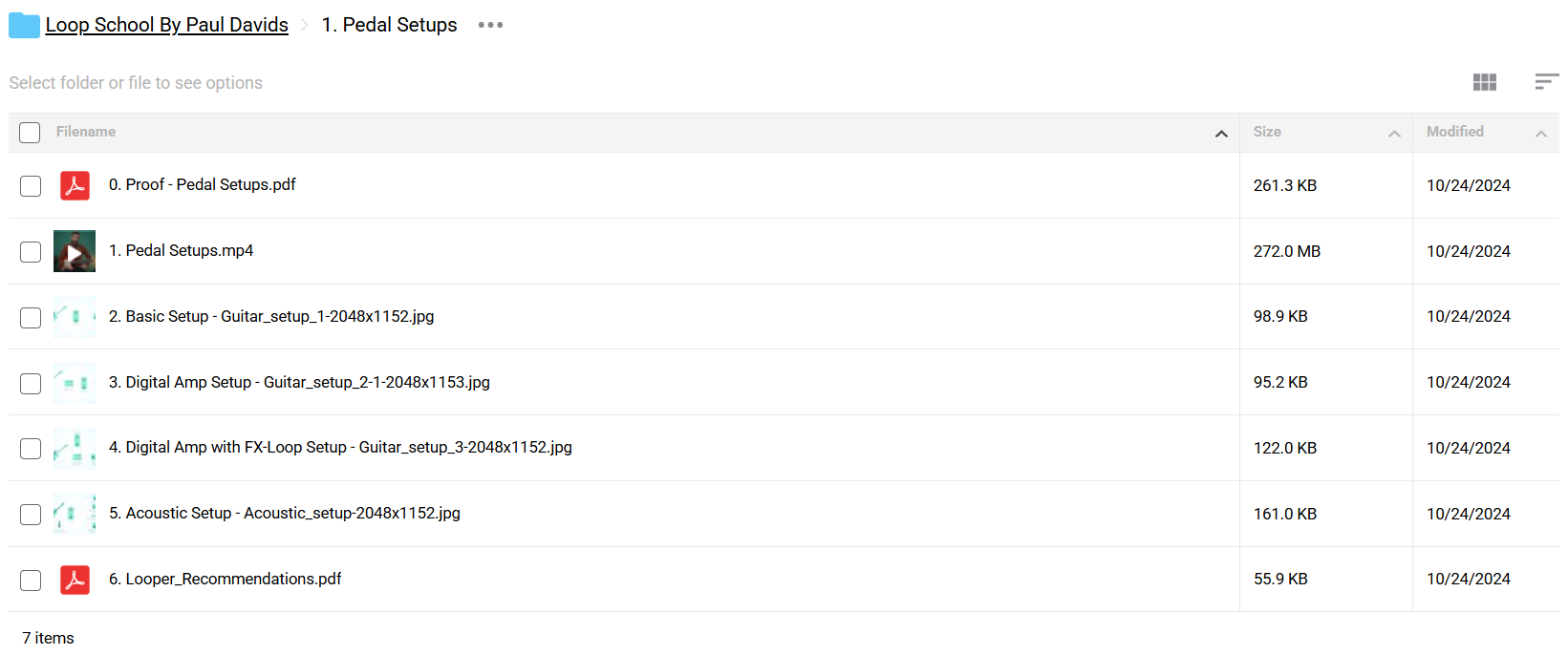

2️⃣. What you’ll learn in Loop School:
Loop School gives you everything you need to create amazing guitar loops with the skills you already have. Here’s what you’ll learn:
- Pedal mastery: Learn the right setup for your acoustic or electric guitar and how to use your loop pedal effectively
- Timing techniques: Build solid timing skills to create loops that stay tight across all layers
- Space management: Fill both vertical (high and low notes) and horizontal (rhythm) space for balanced loops
- Percussion elements: Create drum-like sounds and rhythms using just your guitar
- Arc development: Build your loops with a clear beginning, middle, and high point for engaging music
- Creative expression: Use looping in different styles with Paul’s original compositions
This course connects basic guitar playing to creating rich, layered music. By the end, you’ll think like both a guitarist and a producer, able to create full-band sounds by yourself.
3️⃣. Loop School Course Curriculum:
✅ Module 1: Pedal Setups
This foundational module focuses on the hardware aspects of looping, covering various equipment configurations for different playing situations. Students learn optimal pedal placement, signal chain organization, and specific setup recommendations for electric, digital, and acoustic guitar looping scenarios.
Key lessons include comparative analysis of basic vs. digital amp setups, utilizing effects loops effectively, and specialized considerations for acoustic guitar looping. The module concludes with personalized looper pedal recommendations to help students make informed purchasing decisions for their specific needs.
✅ Module 2: Looping Basics
This module introduces fundamental looping concepts and techniques that form the foundation for the entire course. Students learn essential timing skills, loop creation principles, and best practices for building musical phrases that work well in loops.
The video-based instruction covers critical skills like starting and stopping loops cleanly, managing loop length, and understanding how different musical elements interact when layered. These core techniques prepare students for the more advanced creative applications in later modules.
✅ Module 3: Amp Settings
This technical module explores how to optimize amplifier settings specifically for looping contexts. Students learn how different EQ, gain, and effect parameters affect layered loops and overall sonic clarity.
The instruction covers creating tone separation between loop layers, avoiding frequency masking, and setting appropriate gain staging for clean vs. distorted loops. These skills ensure students can achieve professional-sounding results with clear separation between musical elements.
✅ Module 4: Filling the Space
This creative module teaches strategies for building full, engaging loop arrangements that sound complete despite being performed by a single musician. Students learn to analyze sonic space and strategically fill frequency ranges and rhythmic pockets.
Key techniques include creating percussive elements with the guitar, simulating bass lines, adding ambient textures, and developing complementary musical parts that work together cohesively. The accompanying PDF provides additional exercises for practicing these spatial arrangement concepts.
✅ Module 5: Loop 1: Ready – Set – Loop
This project module guides students through their first complete loop composition with step-by-step instruction. The lesson demonstrates practical application of previous concepts while introducing the workflow for creating structured loop arrangements.
Students learn to build a foundation rhythm part, add complementary melodic elements, and incorporate dynamic changes for musical interest. This project serves as a confidence-building exercise that integrates timing, tone setting, and spatial awareness skills.
✅ Module 6: Loop 2: These Moments
This project explores creating emotionally evocative loops with an emphasis on ambient textures and atmospheric soundscapes. The “These Moments” composition teaches techniques for building loops that convey specific moods and feelings.
Students learn advanced layering techniques, the use of swells and volume dynamics, and how to incorporate tasteful effects to create immersive sonic environments. The project demonstrates how looping can be used for expressive, contemplative musical pieces.
✅ Module 7: Loop 3: Summer Nights
This project focuses on creating rhythmically engaging loops with a bright, uplifting character. “Summer Nights” teaches techniques for incorporating complex rhythmic patterns and interlocking parts that maintain listener interest.
Students learn syncopation techniques, how to create groove-oriented loops, and methods for building tension and release within a looped composition. The project demonstrates how to maintain rhythmic energy throughout multiple loop layers.
✅ Module 8: Loop 4: Vibrant Voices
This project explores creating loops with distinct melodic “voices” that interact like a conversation between multiple instruments. “Vibrant Voices” teaches techniques for giving each layer its own musical identity while maintaining cohesion.
Students learn how to create call-and-response patterns, develop complementary melodic phrases, and arrange parts to create the illusion of multiple guitarists playing together. The project emphasizes creating loops with musical interaction and dialogue.
✅ Module 9: Loop 5: Goodnight
This project focuses on creating gentle, lullaby-like loops with an emphasis on subtle dynamics and delicate textures. “Goodnight” teaches techniques for creating intimate, soothing soundscapes appropriate for reflective situations.
Students learn to incorporate soft playing techniques, strategic use of space, and how to build arrangements that gradually evolve with minimal elements. The project demonstrates creating impactful music through restraint and careful note choice.
✅ Module 10: Loop 6: Holy Trinity
This project introduces advanced harmonic concepts and three-part harmonic structures. “Holy Trinity” teaches techniques for creating loops with rich harmonic development and movement between chord progressions.
Students learn to build loops with distinct verse, chorus, and bridge sections, creating the feel of a complete song structure. The project demonstrates how to incorporate harmonic tension and resolution within looped compositions.
✅ Module 11: Loop 7: Both Worlds
This project explores combining acoustic and electric guitar tones within a single looped composition. “Both Worlds” teaches techniques for blending contrasting guitar sounds to create textually rich arrangements.
Students learn how to transition between and layer acoustic and electric elements, balance different tone characteristics, and create arrangements that highlight the strengths of each instrument type. The project demonstrates creating hybrid compositions that expand sonic possibilities.
✅ Module 12: Loop 8: Lyrical Groove
This final project integrates all previous concepts into a loop composition that incorporates strong melodic “lead vocal” lines over a groove-based foundation. “Lyrical Groove” teaches techniques for creating loops that feel like complete musical statements.
Students learn to develop memorable melodic themes, build supportive groove elements, and structure compositions with clear musical direction. The project serves as a capstone that demonstrates mastery of the full range of looping techniques covered throughout the course.
✅ Module 13: Q&A
This supplementary module addresses common questions and challenges students encounter when applying the course material. The session covers troubleshooting common issues, provides additional tips for performance situations, and offers guidance for continued development.
Paul addresses specific technical concerns, performance anxiety, creative blocks, and equipment considerations based on student feedback. This module helps students overcome obstacles and refine their looping practice as they continue developing their skills.
✅ The Loopbook
This comprehensive reference guide contains written notation, diagrams, and detailed instructions for all loops and techniques covered in the course. The PDF serves as both a study companion during the course and an ongoing reference for students’ future looping projects.
The Loopbook includes chord charts, rhythm patterns, arrangement notes, and performance tips that complement the video lessons. This resource allows students to study the material in depth and apply concepts to their own compositions beyond the course projects.
4️⃣. Who is Paul Davids?
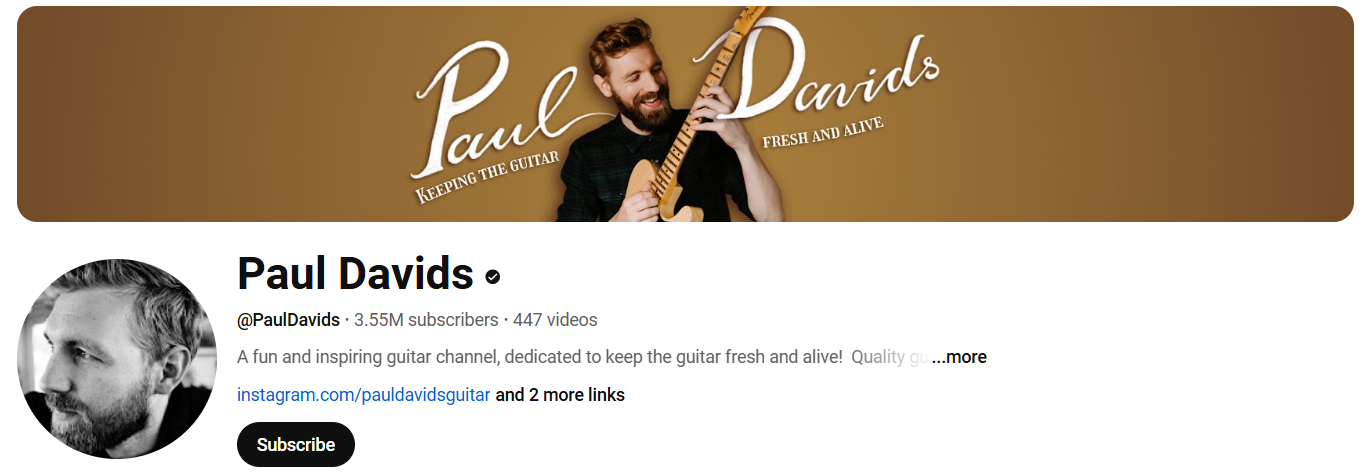
Paul Davids is a guitarist and educator from Rotterdam, Netherlands. He has a music degree in guitar from Rotterdam Conservatory and over 10 years of teaching experience.
Paul’s YouTube channel has grown to over 3 million subscribers since 2016. He’s known for clear, engaging guitar tutorials and performances.
Before teaching online, Paul gave private guitar lessons for years. He developed a method that makes complex concepts easy to understand.
Paul has created three successful courses: “Learn, Practice, Play” for beginners, “Next Level Playing” for intermediate players, and “Acoustic Adventure” for acoustic guitarists. Loop School is his fourth major course.
As a musician, Paul plays many styles including rock, folk, pop, and ambient. His teaching focuses on musicality rather than just technique, helping students express themselves creatively.
5️⃣. Who should take Paul Davids Course?
Loop School works for guitarists of all skill levels who want to sound like a full band. The course is perfect for:
- Beginners who want to use what they already know to create good music early in their learning.
- Intermediate players looking to try new ways of playing and expressing themselves.
- Advanced guitarists wanting to improve their timing, layering, and arrangement skills.
- Acoustic and electric players since the course works for both types of guitars.
- Solo performers who want to add depth to their live shows with rich, layered sounds.
Loop School is especially helpful for self-taught guitarists who can play well but don’t know enough music theory or production to create complex arrangements.
If looping seems confusing or difficult, this course makes it simple and helps you get professional sounds quickly.
6️⃣. Frequently Asked Questions:
Q1: What is guitar looping?
Q2: How much does a good loop pedal cost?
Q3: Is guitar looping hard to learn?
Q4: Can you loop with acoustic guitar?
Q5: Do you need effects pedals for good loops?
Be the first to review “Loop School By Paul Davids” Cancel reply
Related products
Arts & Hobbies


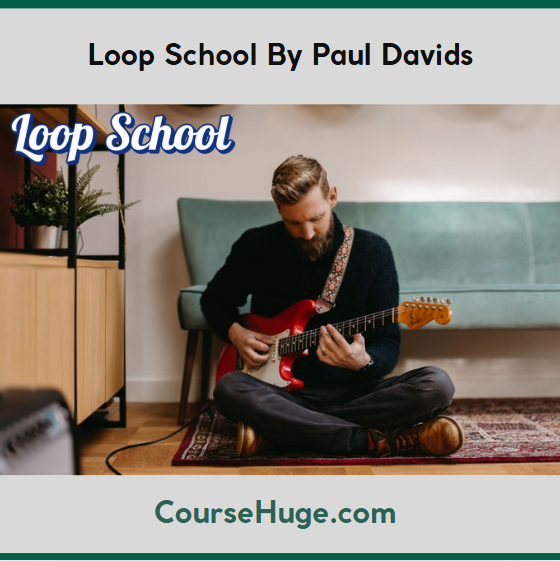
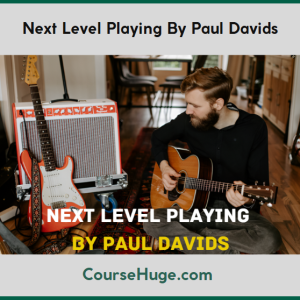

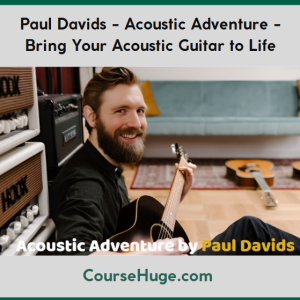
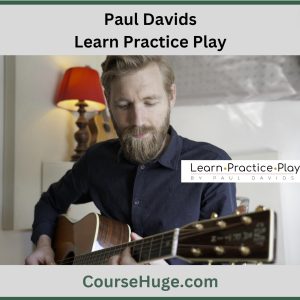

Reviews
There are no reviews yet.